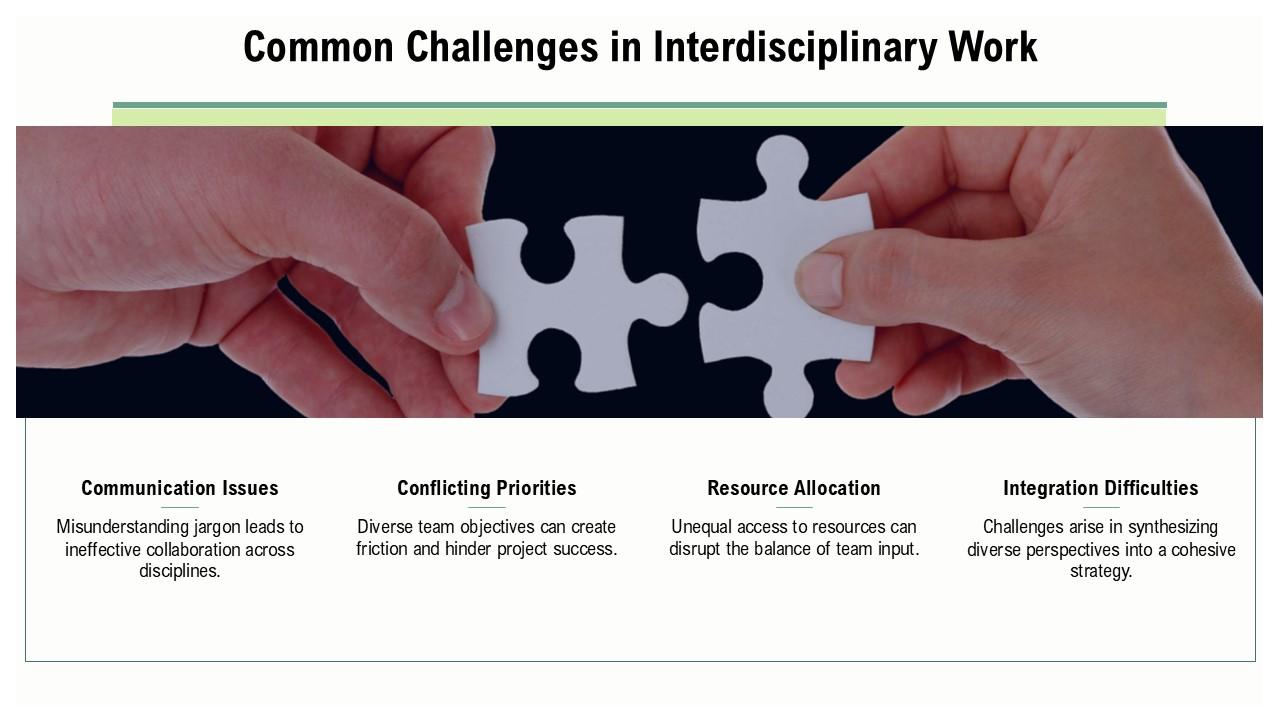Exploring The Value Of Interdisciplinary And Transdisciplinary Methods

Table of Contents
Understanding the Differences: Interdisciplinary vs. Transdisciplinary
To begin, it's crucial to understand the distinctions between interdisciplinary and transdisciplinary research. While both involve collaboration across disciplines, their approaches and goals differ significantly.
Interdisciplinary research integrates knowledge and methods from multiple disciplines to address a complex problem. Researchers retain their disciplinary identities, but they work together to synthesize existing knowledge and create a more holistic understanding. For example, combining sociology and economics to study the impact of poverty on education allows for a richer, more nuanced analysis than either discipline could achieve alone. This approach leverages integrated knowledge and promotes multi-perspective analysis leading to improved collaborative problem-solving.
Transdisciplinary research, on the other hand, goes beyond the integration of disciplines. It actively involves stakeholders from various sectors – including scientists, policymakers, community members, and practitioners – to co-create knowledge and solutions for real-world problems. An example would be a project involving community members, scientists, and policymakers working together to develop sustainable agriculture practices. This process emphasizes stakeholder engagement and the co-creation of knowledge, ultimately leading to effective real-world application through participatory research.
| Feature | Interdisciplinary Research | Transdisciplinary Research |
|---|---|---|
| Focus | Integration of disciplinary knowledge and methods | Co-creation of knowledge with stakeholders |
| Goal | Enhanced understanding of a complex problem | Development of practical solutions for real-world problems |
| Stakeholders | Primarily researchers from different disciplines | Researchers, stakeholders, and practitioners |
| Knowledge Creation | Synthesis of existing knowledge | Generation of new knowledge through collaboration |
| Outcome | Improved theoretical understanding | Practical solutions and societal impact |
The choice between interdisciplinary and transdisciplinary approaches depends on the specific research question and desired outcome. Interdisciplinary methods are ideal for gaining a deeper understanding of complex phenomena, while transdisciplinary approaches are best suited for addressing real-world challenges requiring collaborative action and knowledge co-creation.
Advantages of Interdisciplinary and Transdisciplinary Methods
The benefits of adopting interdisciplinary and transdisciplinary methods are numerous and far-reaching.
Enhanced Problem-Solving
Diverse perspectives are crucial for effective problem-solving. By bringing together individuals from different disciplines, these methods provide:
- A wider range of tools and techniques.
- A deeper understanding of complex problems, accounting for multiple interacting factors.
- The identification of overlooked factors and potential blind spots inherent in single-discipline approaches.
This holistic approach fosters innovative solutions and creative thinking, leading to more effective and impactful outcomes.
Increased Innovation and Discovery
Collaboration between disciplines is a powerful catalyst for innovation. The synergy between different fields leads to:
- The cross-pollination of ideas, sparking new research directions.
- The development of new theories and methodologies that would not have been possible within a single disciplinary framework.
- Significant scientific breakthroughs and technological advancements.
This intellectual exchange fuels knowledge creation and accelerates progress across various fields.
Improved Communication and Collaboration
Effective communication is essential for success in both interdisciplinary and transdisciplinary research. Building strong relationships, fostering trust and mutual respect, and breaking down disciplinary silos are crucial elements. This enhanced communication translates to:
- Improved teamwork and collaborative skills.
- More effective knowledge sharing among researchers and stakeholders.
- Greater interprofessional education opportunities, benefiting all involved.
Challenges of Implementing Interdisciplinary and Transdisciplinary Methods
Despite the significant advantages, implementing these methods presents several challenges.
Communication Barriers
Bridging communication gaps between disciplines can be difficult due to:
- Different terminologies and jargon.
- Varying research methods and approaches.
- The potential for misunderstandings and misinterpretations.
Effective communication strategies and robust conflict resolution mechanisms are needed to overcome these interdisciplinary collaboration challenges.
Power Dynamics and Equity
Power imbalances between disciplines or stakeholders can hinder effective collaboration. It's crucial to:
- Ensure equitable participation from all involved parties.
- Address potential biases and promote inclusivity.
- Foster inclusive research environments that value diverse perspectives.
This requires a commitment to participatory action research and principles of social justice.
Funding and Resource Allocation
Securing funding and resources for interdisciplinary projects can be challenging due to:
- Difficulty in defining project scope and objectives in a concise manner for funding bodies.
- The need for compelling justifications for interdisciplinary research funding.
- Effective resource management across multiple disciplines and stakeholders.
Successful grant writing and clear articulation of the project's value are crucial for overcoming these hurdles.
Conclusion
Interdisciplinary and transdisciplinary methods offer significant advantages for addressing complex global challenges. By fostering enhanced problem-solving, increased innovation, and improved communication, these approaches are crucial for generating impactful and sustainable solutions. The challenges, while real, are surmountable with careful planning, effective communication strategies, and a commitment to equitable collaboration. Embrace the power of interdisciplinary and transdisciplinary methods to drive innovation and solve complex problems. Start exploring these valuable methodologies today!

Featured Posts
-
 Saturday Night Live Season 50 Finale Johansson And Goggins To Host
May 19, 2025
Saturday Night Live Season 50 Finale Johansson And Goggins To Host
May 19, 2025 -
 Reaching Universal Epic Universe Sun Rail And Brightline Travel Guide
May 19, 2025
Reaching Universal Epic Universe Sun Rail And Brightline Travel Guide
May 19, 2025 -
 Find Final Destination 5 Streaming Options And Theater Listings
May 19, 2025
Find Final Destination 5 Streaming Options And Theater Listings
May 19, 2025 -
 When Fame Doesnt Pay The Bills Comparing A Stars Income To An A List Wifes
May 19, 2025
When Fame Doesnt Pay The Bills Comparing A Stars Income To An A List Wifes
May 19, 2025 -
 Legendary Singer Johnny Mathis Retires After Decades Of Touring
May 19, 2025
Legendary Singer Johnny Mathis Retires After Decades Of Touring
May 19, 2025
